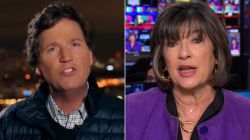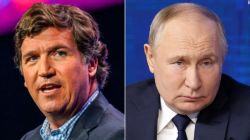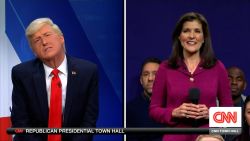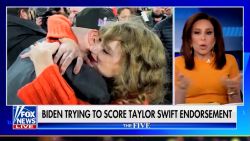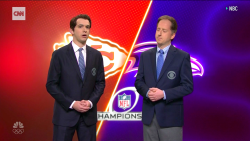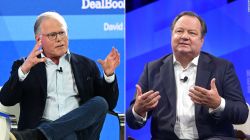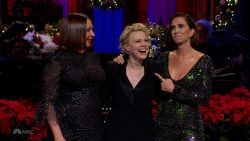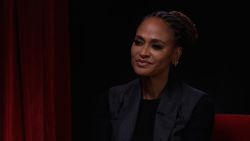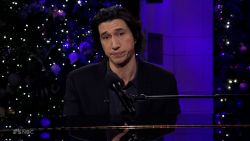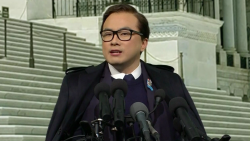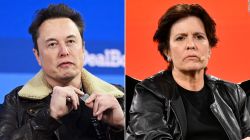One minute, she’s schmoozing with Alanis Morissette and Diablo Cody. The next minute, she’s getting a message from Christopher Steele, the man behind the famous Trump-Russia dossier.
Such is the life of Radhika Jones in her new role as Vanity Fair editor. It’s an enviable position – but it also comes with pressures that past editors have not faced.
Vanity Fair’s owner Condé Nast is doing some serious cost-cutting. The company is even selling some of its other magazines. So an editor like Jones is being judged on her digital business bets as well as her picks for the cover.
“It feels actually like a vital time to be in the business,” Jones said in an interview with CNN Business.
Jones, formerly of Time magazine and The New York Times, took charge of the glossy magazine a little less than a year ago. Until now, she has declined most interview requests. But she has stirred new interest in the magazine through her cover choices and other changes.
“Audiences are hungry for new faces and new voices… My goal is to reflect the culture as I see it,” she said.
In part this means more youthful and diverse stars – her first cover featured actress and screenwriter Lena Waithe.
Kendrick Lamar, Michelle Williams, Felicity Jones, and Michael B. Jordan have graced recent covers.
“It’s been heartening, to me, to hear that people are surprised by our cover choices across the board,” she said.
She talked about how “you can make a moment out of a magazine cover,” especially in the era of social media, when covers “travel meme-like through the world in ways that we don’t even sometimes expect.”
When asked if there will still be a print edition of Vanity Fair in ten years, Jones said, “I think there will be. We still have a robust print business.”
She pointed out that, like many people, she consumes news and entertainment on her phone and in print. It’s not a zero-sum game.
But Jones has continued and advanced Vanity Fair’s digital’s aspirations. Earlier this year the site implemented a partial pay wall. Like so many other outlets, Vanity Fair wants to rely less on advertising revenue and more on subscribers.
The magazine benefits from having top-dollar sponsors for events like the New Establishment Summit, which is taking place this week in Los Angeles.
The conference began five years ago, under former editor Graydon Carter, and this year was Jones’ first time attending. In one corner on Tuesday, Netflix’s chief content officer Ted Sarandos caught up with New York Times publisher A.G. Sulzberger. In another room, Disney CEO Bob Iger chatted with Formula 1 chairman Chase Carey. But the conference also featured up-and-comers like The Wing co-founder Audrey Gelman and venture capitalist Arlan Hamilton.
It was a real-life manifestation of the brand: Identifying powerful people, Jones said and “getting inside their heads and inside their houses.”
Taking over for Carter, the magazine’s editor for 25 years, had to have been daunting. But Jones didn’t dwell on that during the interview with CNN.
She said she sought to learn from the staff: “You want to learn what the traditions are, that are worth keeping and that are valuable, and then you want to learn what some of the habits are that maybe could stand to be broken.”
Such as? Well, she said she’s become a bit of a “workflow nerd.”
“I’m used to editing digitally,” she said, “and my sense, because Graydon very generously left me a mug full of sharpened pencils, is that they were more analog before I came.”
So that’s changed. Like so many editors with a digital mandate in 2018, she talked about striking a balance between the “traditions of the place” and a determination to “bring it into the current moment.”
“A lot of people have asked me about changes to Vanity Fair,” Jones said. “No one ever asks me, ‘Oh, what have you kept the same?’”
A lot, she said. “The truth is, Vanity Fair has this fantastic formula, back from when Tina Brown reinvented it in the 1980’s. It’s about a mix of high and low. We cover these certain areas: politics and technology and finance and course Hollywood and celebrity culture. And those things are really the same. We’re doing those stories. We’re focused on those areas.”
Jones acknowledged there’s been belt-tightening at the magazine but didn’t divulge details, tactfully sidestepping the subject like a Hollywood celebrity who avoids discussing their private life in a Vanity Fair profile.
She said the changes are about figuring out “how do you work most strategically in 2018 and 2019?”
When she started the new job, “I made a very valiant effort to keep a diary at the beginning,” she said, “because I had read Tina Brown’s Vanity Fair Diaries and I felt that it was incumbent on me to write my version.”
But that didn’t last very long. The first days were a blur, she said. There were stories to assign and lists to make and parties to plan.
The 100-person New Establishment List featured Steele, the former intelligence officer, at No. 38. He has been in hiding, but he broke his silence by sending Jones a thank you note. He said he would have liked to attend the summit, but could not given his “present legal and political situation.”
Robert Mueller, meantime, was No. 1 on the list, ahead of the usual media and tech moguls.
“He’s a very important man,” Jones said mischievously, pointing out that the special counsel is both “commanding of great attention and also under the radar.”
Another under the radar pick was No. 99, the senior Trump official who recently wrote an anonymous op-ed for The New York Times.
Joking about the pick, Jones said, “We figured that way, if anyone in the administration was upset that they weren’t on the list, we could always suggest that they could take that space if they wanted to.”




